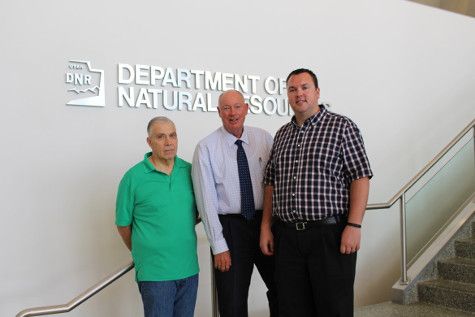By Wade Kloos, GIS Director, Utah DNR on May 18, 2016
DNR Continues to Build GIS Value with ROI Documentation
This article will take 3 minutes to read
Now in its second year, DNR’s initiative to measure and document GIS results has proven to be an indispensable activity to shed light on the true impact GIS is having on our organization. Ask any GIS professional what the value of GIS is to their organization and they will likely shrug their shoulders and may respond with something like “it’s complicated, but it’s probably pretty high”. There is no reason to settle for such vagueness anymore. DNR knew we were producing good results with GIS but without a method (an easy to repeat method) to extract meaningful metrics of our workflow-related impacts, we would continue to be in the dark relative to the value we were delivering. Last year, DNR created a one page GIS ROI and Benefit Report. To encourage staff to try this new tool, we created a contest. DNR Administrators were blown away with the first year’s results. In 2016, we repeated the contest and to date, we have over 30 GIS projects that have been vetted through our GIS ROI and benefit documentation process.
This year we awarded our Grand Prize Award to Aaron Austin of the Division Water Resources for his Water Related Land Use Program Update project. This project will re-invent a labor-intensive field survey task with the integration of satellite data, automated data checks, and elimination of significant travel expenses. Just as important, this project is anticipated to reduce a 5 to 6-year process down to one year and help the division incorporate water-related land use data into their planning documents in a more timely and comprehensive fashion. The fact that there was a cost avoidance/re-purposing of more than 7,800 staff hours and future annual saving of almost $200,000 also helped Aaron earn the top award, not to mention the attention of all DNR Directors!
Our Runner-Up Award this year went to Lee Eschler of the Division of Water Rights for his Water Right Distribution Activity Update project. Lee was able to improve this workflow by 87%, avoid 787 hours of staff time and save his division almost $20,000 per year. In addition to these notable quantitative results, this project also developed significant qualitative benefits such as a more connected field staff with access to near real-time water right activity data, thus enabling better, more informed decisions in the field.

While these two GIS projects are impressive, each of the GIS projects that completed a GIS ROI and Benefit Report revealed similar evidence of their heretofore hidden value. This illumination of impact is essential for management to assign an accurate value of GIS and its role and potential in the organization. At DNR, we have also come to learn that documenting GIS ROI can be personally beneficial to GIS staff. It is definitely worth your time.
Our 30 plus GIS projects have revealed an annual savings of approximately $440,000 to the department – this amount keeps growing with each new GIS results documentation effort. We average a 76% workflow improvement each time GIS is incorporated into business operations. Our GIS ROI and Benefit Report is growing in popularity and acceptance. If you would like to give it a try, you can download the latest version of the Excel report.